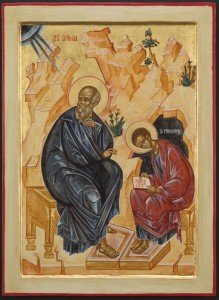In the last installment of this article I began sharing ideas about the Gospel of John. I highlighted some differences in John’s Gospel when compared to the three Synoptic Gospels. There are some things, however, that John’s Gospel has in common with the other three gospels. They are:
• Jesus’ adult life begins with His baptism by John;
• Jesus’ public activity begins in Galilee;
• Jesus walks on water and comes to His disciples on a stormy sea;
• Jesus feeds a multitude with a few loaves and fish;
• Jesus gives sight to a blind man;
• Jesus raises a dead person;
• Jesus heals a paralytic.
Finally and importantly, John and the synoptics emphasize Jesus’ final week in Jerusalem and his crucifixion and resurrection. Indeed, John devotes more of his gospel to this than the other gospels do.
But even when John and the other three gospels share similar stories, John most often tells them differently. So also the story of Jesus’ final week is told very differently. In John, much of it consists of Jesus’ farewell discourses, spoken on the evening of His arrest. The story of Jesus before Pilate is significantly different. In the synoptics, Jesus is basically silent. In John, the two engage in conversation in which Jesus bests Pilate. Indeed, Jesus seems to be in control of the process.
The accounts even differ on the day of Jesus’ crucifixion. In the three other gospels, it happens on the day of Passover (Passover is both a weeklong and a particular day festival). The day of Passover began at dusk, so the whole sequence of the synoptics from Jesus’ last supper with his followers through His arrest, torture and death all happened on Passover. In John, it all happens the day before Passover. Jesus dies at the same hour that he Passover lambs are being slaughtered for that evening’s Passover meal. Jesus is dead before the Passover begins.
These differences and similarities have led mainline scholars to wonder whether John knew any of the synoptic Gospels. Had he read or heard one or more of them? There is no consensus. Some think he knew Mark and perhaps Luke. The majority are undecided, because the case is inconclusive. Verbal parallels – the kind that are precise enough to imply that an author knew another document – are few.

